Harvest 2025 at its Midpoint: Hurry Up and Wait
At a time when we're usually at the peak of harvest, we instead spent much of the week in a holding pattern. Early Wednesday morning, a rare thunderstorm rolled through, caused by a cutoff low left behind after the passage of tropical storm Mario last week.
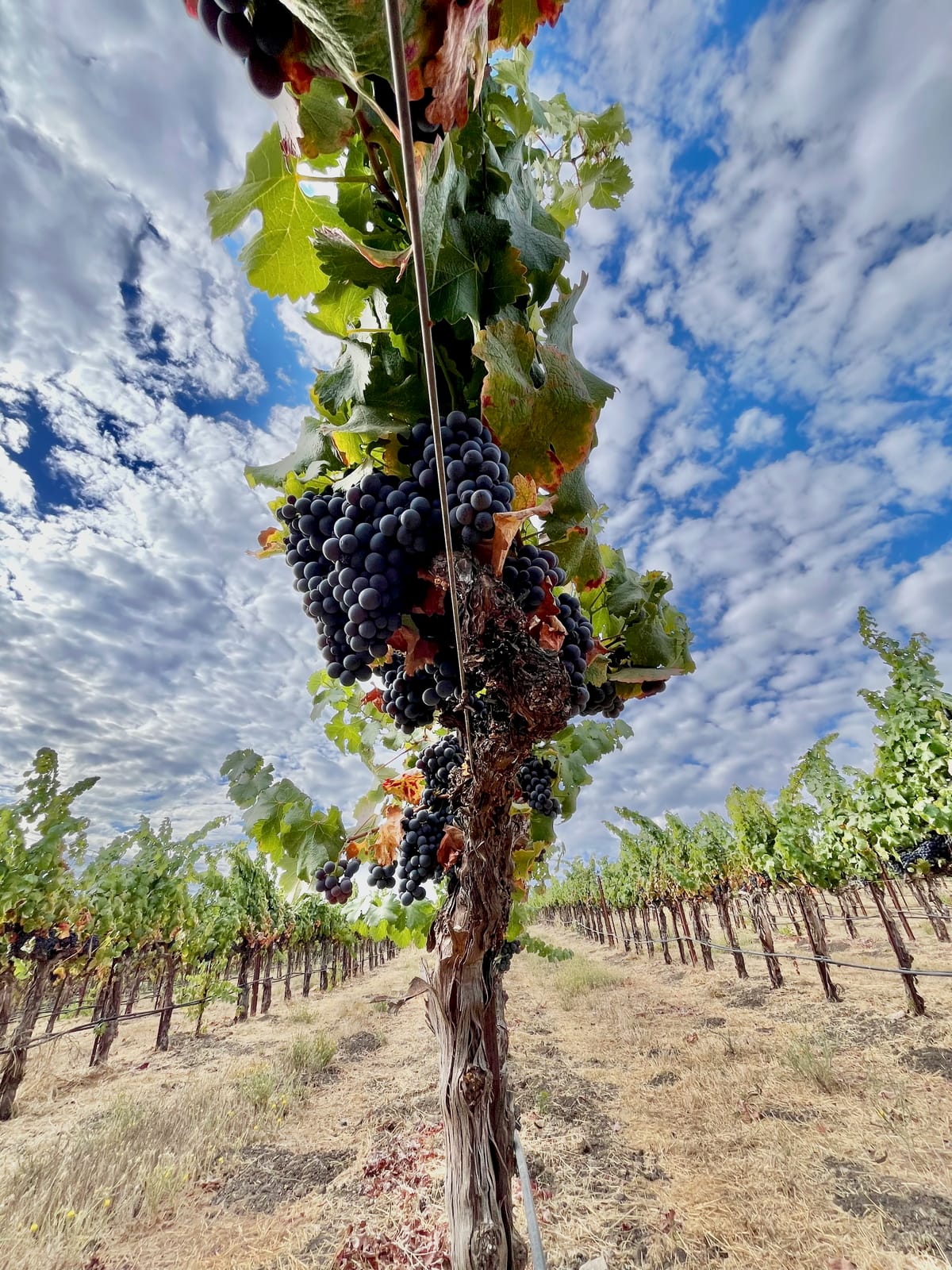
Friday, September 26th
At a time when we're usually at the peak of harvest, we instead spent much of the week in a holding pattern. Early Wednesday morning, a rare thunderstorm rolled through, caused by a cutoff low left behind after the passage of tropical storm Mario last week. The rainfall we received (0.35") was modest, but the light show was impressive. From about 2am and lasting about the next two hours, we saw lightning flashes every few seconds and intermittently heavy downpours.
Before you start to worry, a little harvest rain isn't a big deal, or even that rare in winegrowing regions. California is unusual in having very little precipitation in September and October, but most of Europe, including the Rhone, sees at least some rain every month. Unless the quantities are large enough to get down to the root zone or it stays still and humid for long enough to encourage an outbreak of rot, a little rain is fine. It can even bring some benefits, rinsing the accumulated dust off the vines and giving them a little burst of energy for the final push of ripening. The photo below is of a second-crop cluster from the Haas Vineyard on Wednesday morning.
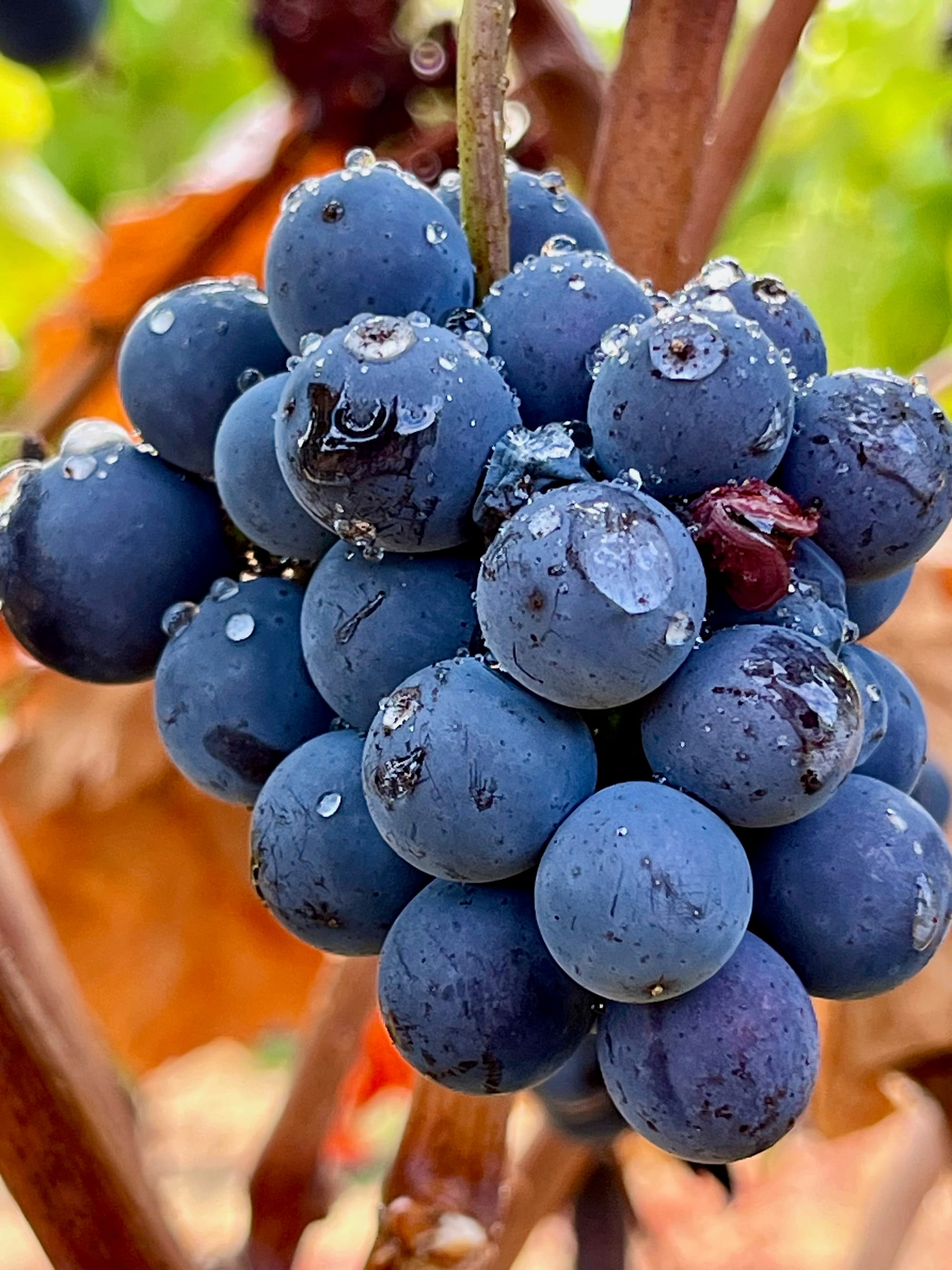
More about the two things that you worry about with rain. First, dilution. If enough water gets down to the root zone, the vines can pull that water into the berries and dilute the flavors. At a third of an inch, that isn't going to get deep enough to where most of our roots are, so that's OK. Second, the spread of rot in the vineyard. If it stays wet and humid for a several days, rot spores can proliferate. That tends to be more of an issue in years when you've already seen some degradation of the fruit quality from heat or insects or enough swelling to split some grapes. This year, growing conditions have been great and the fruit quality impeccable.
The rain did push a brief pause, as we waited until today to start picking again. But it wasn't like the grapes were pouring in before this. The moderate weather the past couple of weeks and the outstanding vine health have meant that while we're at sugar levels we could pick at, the acids and overall chemistry have been so good that we decided we could wait just a little longer. Nevertheless, the harvest-by-week graph doesn't look like the classic bell curve:
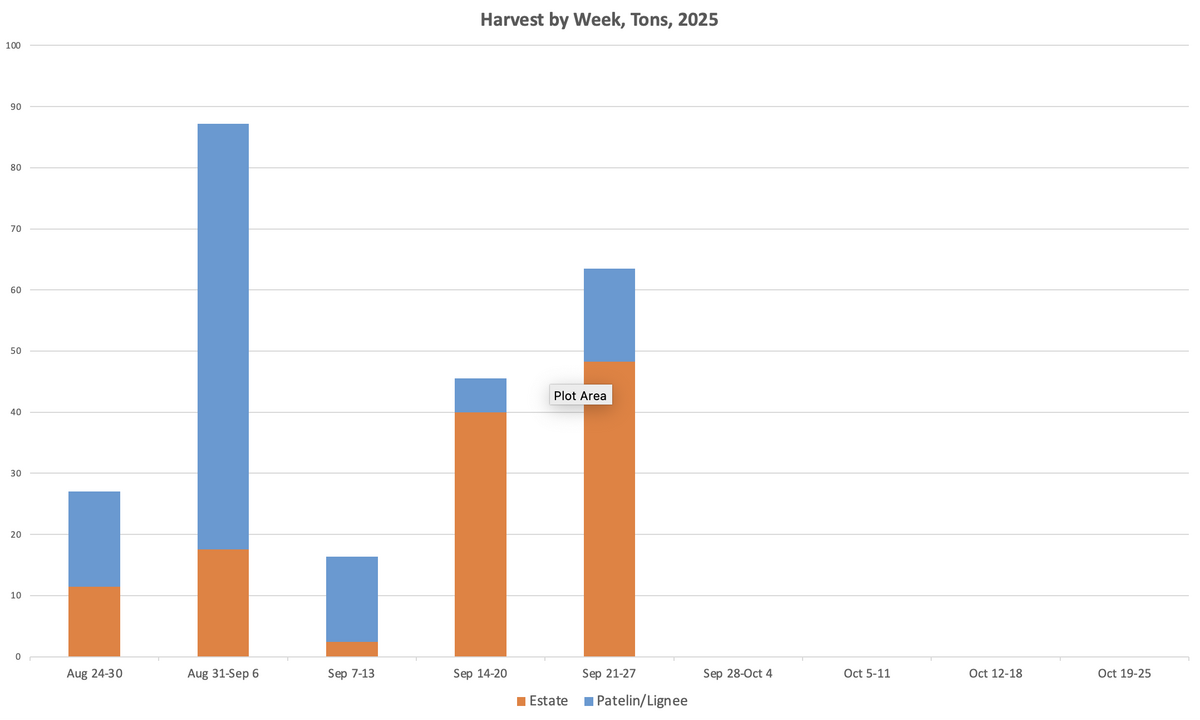
The fruit that has come in has looked terrific. On the white side, we've harvested two lots of Viognier, four lots of Roussanne, one lot of Marsanne, two lots of Vermentino, one lot of Clairette Blanche, and three lots of Grenache Blanc (pictured, below). None of these amount to all of what's out in the vineyard, so it's early to make any assessment of what it means for yields, but we were excited that our new planting of Clairette Blanche, on its fourth leaf, brought in eight bins while last year it only produced 2 bins.
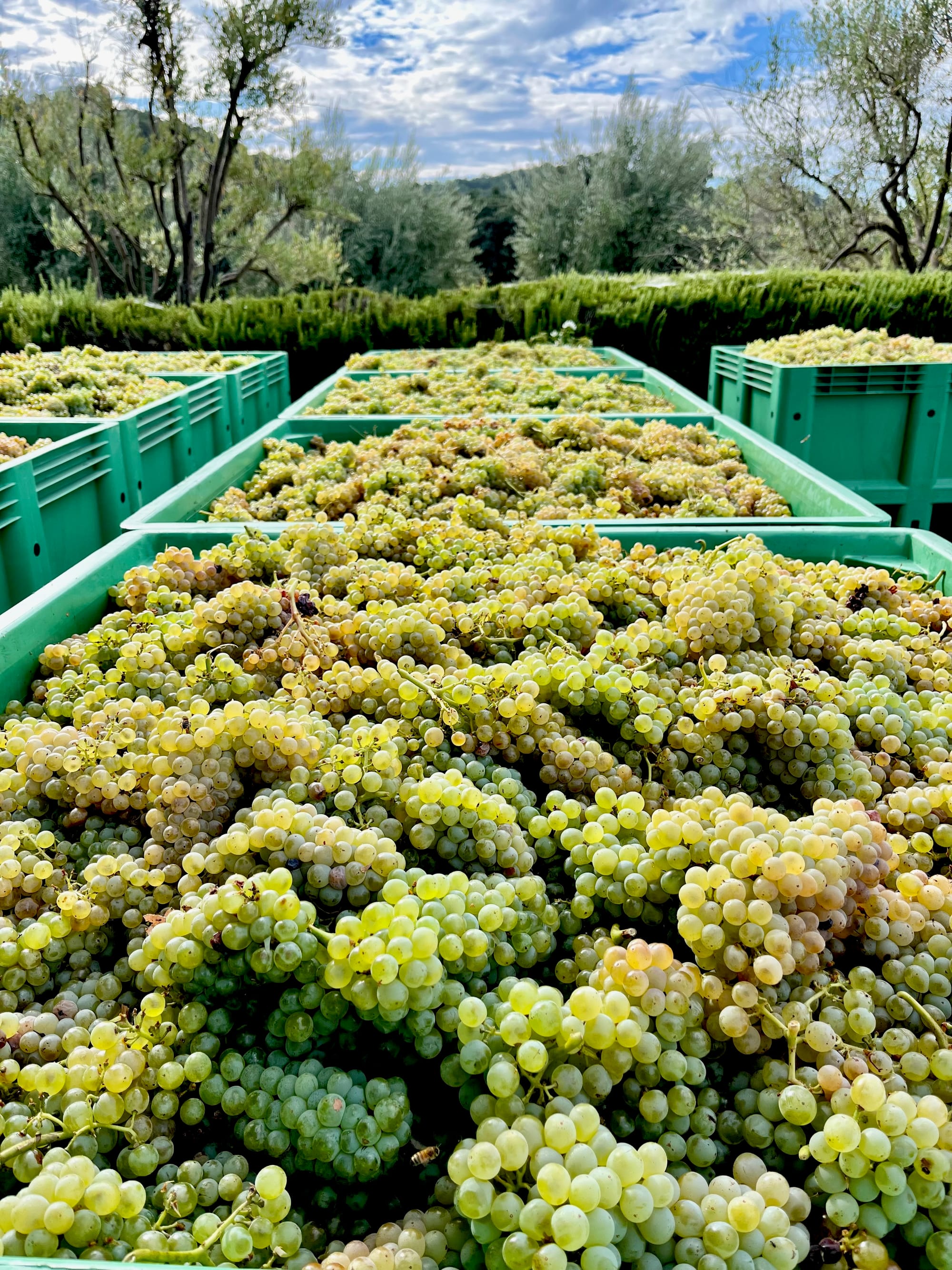
On the red side, we've harvested seven lots of Syrah, five lots of Grenache, and one lot each of Muscardin, Cinsaut, and (just today) our first lot of Mourvedre. Of those, only our tiny (0.5 ton) Muscardin lot accounts for everything that's coming in. That was up 10% from last year's 0.46 tons. I don't think there's a lot to conclude from those numbers yet.
If you look at the harvest chalkboard, it's approaching half full. But that probably exaggerates how far into harvest we are. According to Chelsea's estimates, we're only at around 40% done, and it's seeming more likely that we'll exceed those estimates than that we'll fall short. So that means we may look back and realize at this moment that we were only 35% done.
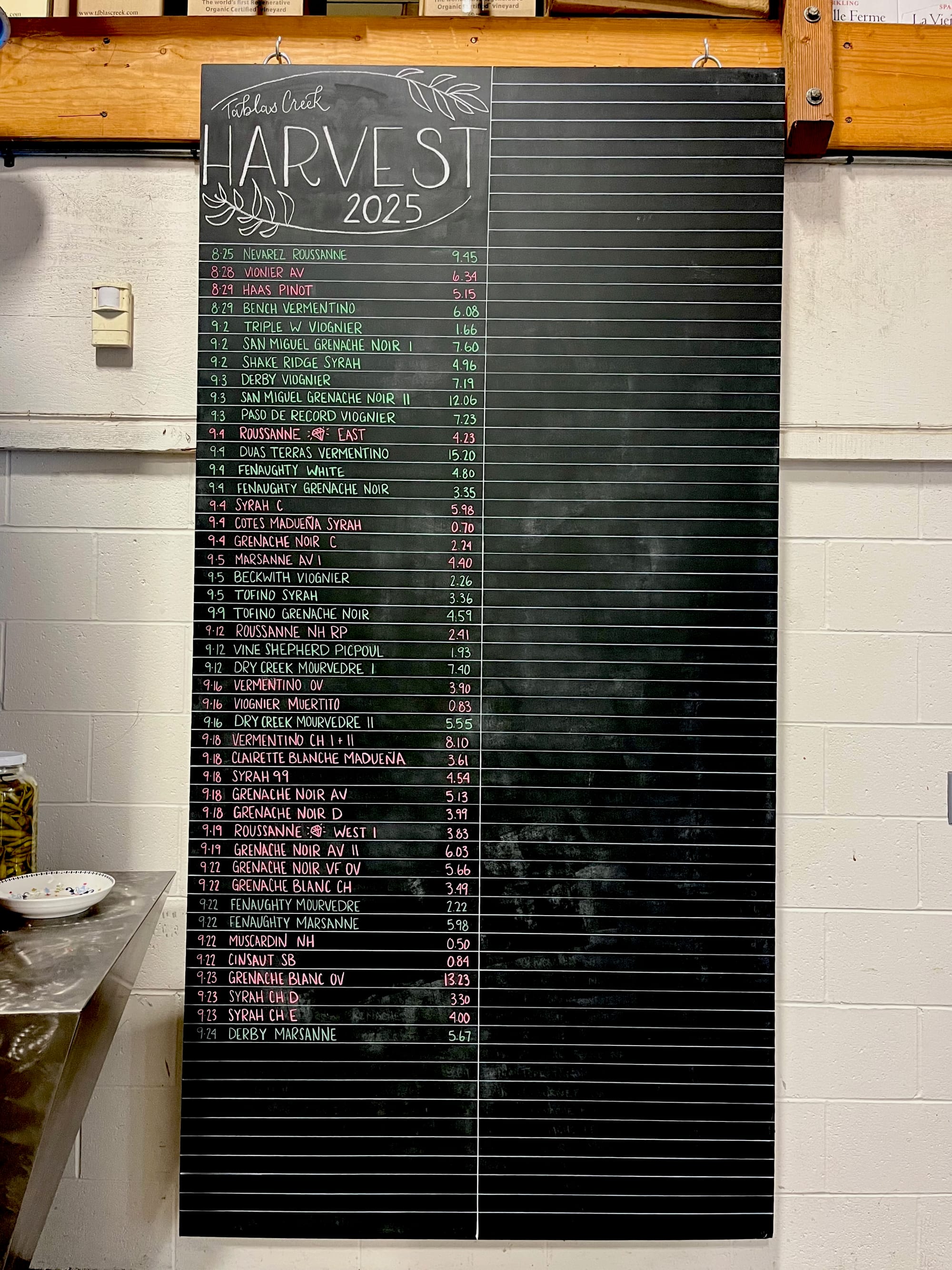
If you're trying to make sense out of the chalkboard, here's a cheat sheet. Each line is a separate pick.
- The figure on the left is the date.
- Next (for non-estate wines only) comes the vineyard name, like Shake Ridge or Tofino.
- Then comes the grape.
- Then (for estate wines only) comes a block name or abbreviation, such as NH (short for New Hill) or Jewel West.
- Then, when appropriate, Roman numerals indicate the pick number through a block. We haven't done multiple picks many times yet, but by the time we finish you'll start to see a lot of II's, III's, and even IV's.
- Finally comes the number of tons from that pick.
- The color indicates whether it's estate or purchased fruit, with green being purchased and pink being estate.
As is often the case, we started this year with a higher percentage of non-estate picks, typically whites for Patelin Blanc from warmer parts of Paso Robles, and red grapes (mostly Grenache) that will be direct pressed into Patelin Rosé. This year our early picks also included all our the Lignée de Tablas vineyards, which come from regions further inland. While coastal California has been quite cool this summer, inland areas have been warmer than average. That includes Lodi (source of the Bench Vineyard Vermentino we'll be debuting this year) and the Sierra Foothills that are the source for both our Fenaughty Vineyard red and white and our Shake Ridge Syrah.
Looking forward, our focus is going to be shifting toward reds. Until now, 55% of what we've harvested has been white, and almost half of the reds that we've harvested have been direct-pressed to go into Patelin Rosé. That's going to be changing as the later-ripening reds like Mourvedre, Counoise, and Cinsaut start to get ripe, and as we shift our focus on Grenache to the riper picks that will go into red wines rather than rosés. Scenes like the one below, of Gustavo on the forklift with a bin of Syrah, will become commonplace.
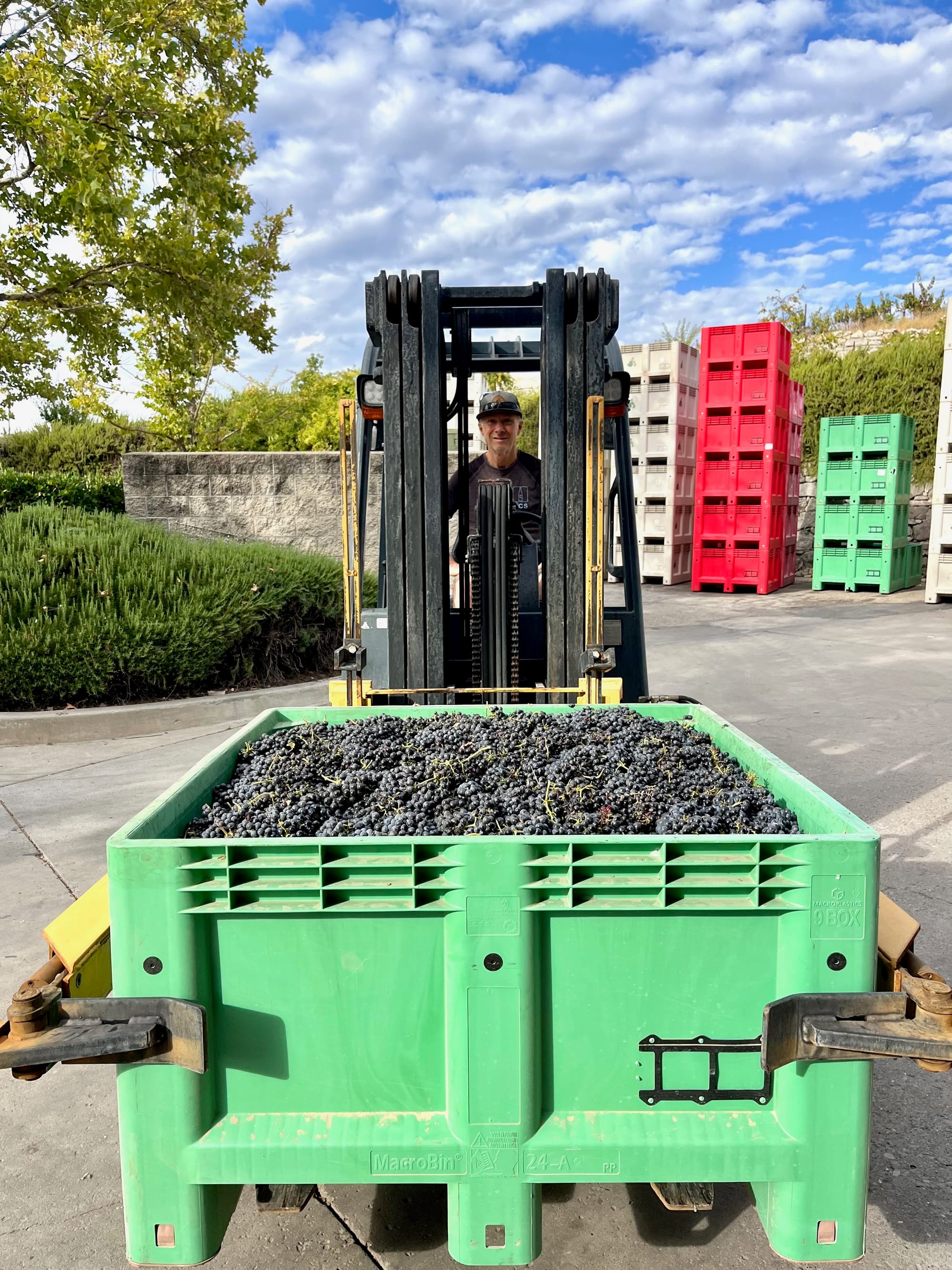
While the pace is sure to pick up, we don't expect anything dramatic in the near term. The weather for the next week looks to have most of our highs in the upper 70s. Those are not exactly the sorts of temperatures that are going to cause rapid movement in ripeness. But that's fine too. There's recency bias that makes it feel unusual, because we've become accustomed to relatively short harvests in recent years, but those years have been anomalies:
- 2022 started early and ended earlier because of sustained heat the whole summer. Duration: 7 weeks.
- The unusually cool year of 2023 didn't get started until the second half of September, and then a warm October allowed us to finish by mid-November. Duration: 7.5 weeks.
- 2024 started at an average time but a very warm harvest season meant that we were done (except for a surprise pick of second-crop clusters) in a blistering 6.5 weeks.
And yet, if you look historically, most of our vintages have seen something more like a 9 week harvest. It seems like 2025 is on pace to follow those years more than the three recent ones.
The condition of the vineyard suggests that we're in good shape to weather an extended harvest. The blocks are still mostly green, at a time of year when they're often starting to turn a ragged brown. The health can also be seen in the clusters, like the Mourvedre (below). It feels like a long time since we've seen such robust, perfect clusters on this often stress-prone grape.

So, as we reach harvest's midpoint, we're excited about where we are. Full speed (such as it is, this year) ahead.

